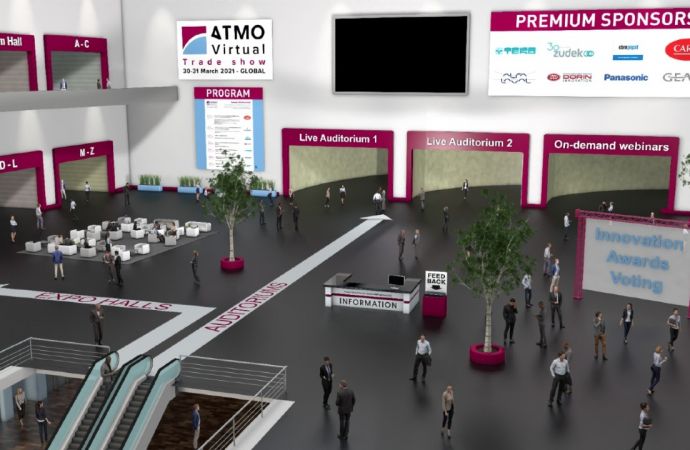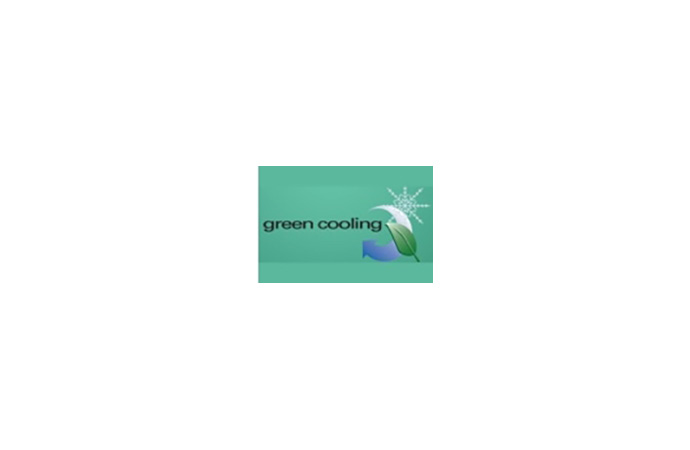At the ATMOsphere Bangkok conference titled “Natural Refrigerant Solutions - Policy drivers and examples of Natural Refrigerants being used around the world” presenters from AHT Cooling Systems and shecco outlined a number of case studies related to HC technology from different regions. Another presentation by Brent Hoare gave an update on the recent Australian carbon equivalent price on HFCs.

The conference held on 27 July 2012 in Bangkok targeted climate negotiators that are looking for technologically viable, safe and efficient alternatives to chemical refrigerants that have to be phased out in the near future.
2012 achievements in developing countries, Alexandra Maratou
Alexandra Maratou from shecco gave an update on natural refrigerant projects and initiatives in Article 5 countries and economies in transition highlighting that this year there have been a number of significant achievements in terms of HFC-free installations in countries like Turkey, Thailand, India or China. This year has also seen an increasing trend towards putting in place enabling conditions such as training of technicians or introduction of standards that might enable wider deployment of natural refrigerants in the next year. Here she highlighted the recent case of China that in June 2012 released a national safety standard for flammable refrigerants formalising the use of R290 in air conditioners.
AHT’s HC equipment for food refrigeration around the globe, Sumitra Eksithichai
Headquartered in Austria, AHT Cooling Systems has operations in different countries around the world, including China, Hong Kong, Brazil or India. The core business includes production and servicing of hydrocarbon-based supermarket equipment, ice cream cabinets and bottle coolers.
While focusing on Asia, Ms Eksithichai noted that there are significant differences as well as challenges in relation to acceptance of HC equipment in various countries especially as a result of the flammability aspect. While countries like Singapore, Indonesia, Malaysia and Philippines have already installations using hydrocarbons, the fear of flammability has so far prevented from such installations in South Korea. Another barrier to introduction of HC equipment in Asia is the lack of training of the servicing personnel as well as government ban on use of flammable refrigerants. She also highlighted the good example of Thailand, where progressive retailers such as Tesco and Macro invest in HC equipment to cut their energy costs. Stand-alone cabinets or banked together in an aisle with large volume capacity result in 60% reduction in running costs compared to open freezers.
Putting a price on HFC pollution, Brent Hoare
The presentation by Brent Hoare from the Green Cooling Association focused on the Australian carbon equivalent levy on HFC that has been introduced since 1 July 2012. In addition to encouraging increased recycling of synthetic gases, leakage reduction, switch to equipment using natural refrigerants and spur of innovation, the increased price on HFCs will also promote the use of available retrofit refrigerant solutions, in particular the use of hydrocarbon refrigerants in vehicle air-conditioning, transport refrigeration, small commercial refrigeration and split system air-conditioning, among others.
Transitioning towards low-GWP refrigerants is a major undertaking and requires coordination within the industry, including end-users as well as with the government. Many elements, such as awareness, standards, licensing and training have to be considered and funding for these activities needs to be allocated. To this end, Mr Hoare emphasised that a roadmap with concrete steps and targets should be put together.
2012 achievements in developing countries, Alexandra Maratou
Alexandra Maratou from shecco gave an update on natural refrigerant projects and initiatives in Article 5 countries and economies in transition highlighting that this year there have been a number of significant achievements in terms of HFC-free installations in countries like Turkey, Thailand, India or China. This year has also seen an increasing trend towards putting in place enabling conditions such as training of technicians or introduction of standards that might enable wider deployment of natural refrigerants in the next year. Here she highlighted the recent case of China that in June 2012 released a national safety standard for flammable refrigerants formalising the use of R290 in air conditioners.
AHT’s HC equipment for food refrigeration around the globe, Sumitra Eksithichai
Headquartered in Austria, AHT Cooling Systems has operations in different countries around the world, including China, Hong Kong, Brazil or India. The core business includes production and servicing of hydrocarbon-based supermarket equipment, ice cream cabinets and bottle coolers.
While focusing on Asia, Ms Eksithichai noted that there are significant differences as well as challenges in relation to acceptance of HC equipment in various countries especially as a result of the flammability aspect. While countries like Singapore, Indonesia, Malaysia and Philippines have already installations using hydrocarbons, the fear of flammability has so far prevented from such installations in South Korea. Another barrier to introduction of HC equipment in Asia is the lack of training of the servicing personnel as well as government ban on use of flammable refrigerants. She also highlighted the good example of Thailand, where progressive retailers such as Tesco and Macro invest in HC equipment to cut their energy costs. Stand-alone cabinets or banked together in an aisle with large volume capacity result in 60% reduction in running costs compared to open freezers.
Putting a price on HFC pollution, Brent Hoare
The presentation by Brent Hoare from the Green Cooling Association focused on the Australian carbon equivalent levy on HFC that has been introduced since 1 July 2012. In addition to encouraging increased recycling of synthetic gases, leakage reduction, switch to equipment using natural refrigerants and spur of innovation, the increased price on HFCs will also promote the use of available retrofit refrigerant solutions, in particular the use of hydrocarbon refrigerants in vehicle air-conditioning, transport refrigeration, small commercial refrigeration and split system air-conditioning, among others.
Transitioning towards low-GWP refrigerants is a major undertaking and requires coordination within the industry, including end-users as well as with the government. Many elements, such as awareness, standards, licensing and training have to be considered and funding for these activities needs to be allocated. To this end, Mr Hoare emphasised that a roadmap with concrete steps and targets should be put together.
MORE INFORMATION
Related stories





